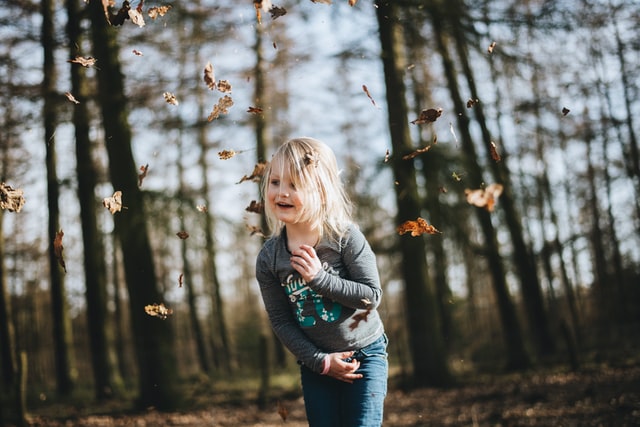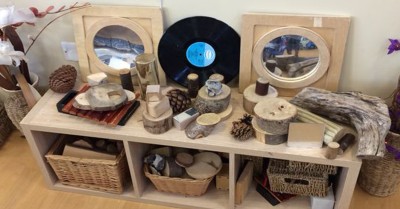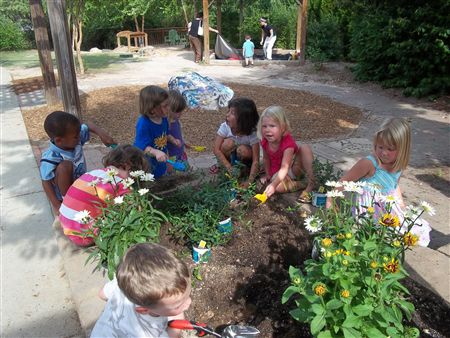Nature play is any play that gets children active or thinking actively outdoors. The goal is to build skills and be able to play without parental or adult control. This can be in any setting, so long as it’s outdoors.

Nature play is when children are provided with the opportunity to engage in unstructured play activities in outdoor settings where natural elements feature, such as logs, rocks, and water, as opposed to conventional manufactured play equipment. It is when children create their own play using natural features.
Associate Professor Janet Dyment from the School of Education at the University of Tasmania
Also, nature play gives children the chance to explore the world and create first-hand connections with the earth. Through this, kids develop into resilient, healthy, happy, and creative members of the community.
Most importantly, nature play gets kids away from screens and roots them in the real world. Screens rarely offer the same sense of adventure. Sadly, children are more and more addicted to their digital devices, and Covid-19 lockdowns have made this problem worse. Kids stay much longer inside with social distancing rules in force. Unfortunately, it also greatly limits the time they get to spend outside.
This article explores the ways schools and families are using nature play, and why it is vital for students’ growth and well-being.
Does nature play improve a child’s development?
To start, nature play develops a child’s creativity. This is where they make imaginative play with only the raw materials of the earth around them. As such, it is completely unstructured. There are no ‘rules’ on how to engage and no structures limiting their play.
The most obvious benefits include fresh air, exercise, the development of gross motor skills and hand eye co-ordination. This prevents obesity and sets up good life habits, promoting the practice of ‘getting outside’ on a regular basis.
Even the best screen games encourage sedentary behaviour. Sitting in the same position for hours is a problem that adults are acutely aware of. They appreciate how it affects posture, breathing, circulation and concentration.
Moreover, screen games impose their own rules on the user. Kids play according to the world and the terms set out by the app. Some children do engage with digital devices in creative ways. However, this is no substitute for the imaginative benefits of completely unstructured play outside.
How is nature play used in educational settings?
Teachers understand the value of nature to learning. Many kindergartens create activities with natural materials like pebbles, wood, leaves, and seeds. Nature play invites open-ended interactions, exploration, and discovery. And, because natural materials are often loose parts, they can be sorted, moved, combined, and taken apart. Their smells and textures inspire sensory play too.

In early year classrooms children continue to learn from nature. They discover how things grow, how to keep vegetable gardens, and they deal with issues like saving water, recycling, greenhouse gases, and nutrition. These ideas are supported by reading about the natural world and the relationship of humans to their environment.

Activities like bushwalking also help to promote physical activity. A video about Centennial Parklands’ renowned Bush School gives us a glimpse into the benefits of an outdoor education.
But is it safe?
Of course, nature play has its risks. But, if protective parents are keeping their kids away from nature, they could be doing their kids a far greater disservice. Many experts say that the rewards far outweigh the risks, which are vanishingly small. Also, outdoor play helps children to learn, to build resilience, and confidence.
Greener environments are also associated with calmness and peace. Physical activity and imaginative play help kids run off steam, as well as providing a break from an increasingly noisy, distracted world. Learning to respect nature, taking risks and sharing adventures together, are ways that kids learn about themselves and their physical abilities.
Green spaces, therefore, are not only a decorative bonus to cities but essential places for children to build life skills.
The more high-tech our lives become, the more nature we need.
NaturePlayQLD
Does nature improve kids’ ability to learn?
While nature play improves things like imagination, resilience, and social interaction, it has academic benefits too. In schools, nature play has been shown to improve academic achievement over traditional instruction.
Interestingly, a 2019 study strongly suggests that outdoor play boosts academic learning, personal development, and environmental stewardship. Therefore, nature helps learners to be more attentive, less stressed, more self-disciplined, as well as more engaged, more active and fit. Learning is likely to improve in these conditions. It also concludes that the greener a school’s surroundings, the better it performs in standardised tests. Amazingly, the findings are similar in classrooms with green views.
In addition, the National Wildlife Organisation report, “Back to school: Back outside” shows that nature play increases children’s enthusiasm and motivation for learning. To summarise, the benefits of more outdoor play and greener school grounds include:
- Markedly improved classroom behaviour with fewer discipline referrals and related problems
- Helping students concentrate for longer periods and mitigating attention deficit problems
- Helping students to learn across disciplines and making them better real-world problem solvers
- Keeping students engaged in their schoolwork and making them less inclined to drop out of school
- Measurably improved classroom performance in math, science, reading, and social studies
- Increased scores on state-wide standardised tests in basic skills, reading, science, and math
What happens when kids don’t have access to nature play?
Unfortunately, not all young people have access to nature play. More and more people live in cities and some cities don’t include natural spaces in their urban planning. The effects are not negligible. According to research, poor exposure to nature and green spaces may have a severely negative influence on children’s physical and psychological health. Conversely, open, green spaces have positive impacts on the quality of everyone’s lives.
Accordingly, the UN’s SDG 11 aims to make cities and human settlements inclusive, safe, resilient, and sustainable. For human societies to develop equitably, they must have urban planning that is in harmony with nature.
Furthermore, the UN makes this explicit in SDG target 11.7, which aims by 2030 to provide “universal access to safe, inclusive and accessible, green and public spaces, in particular for women and children, older persons and persons with disabilities.”
However, the challenge of meeting this goal is significant. Currently, the global average of urban areas devoted to open public spaces is only about 16%.
Conclusion
In a nutshell, green spaces and access to nature mean much more for our health than we care to admit. For children especially, nature play is vital for personal development and wellbeing. Therefore, urban planning and the protection of public spaces is a necessary part of the strategy for a sustainable future. Parents can help their kids in practical ways by encouraging more unstructured playtimes in natural settings. They can think about bush walks and picnics with the family, and let the kids find their own way to play together in a safe and responsible manner.
THRIVE is The Holistic Regenerative Innovative Value Entity. THRIVE consists of a framework, platform, and Sustainability Performance Scorecard to help people and organisations analyse and improve their strategies for a more ‘thrivable’ future. Interested in sustainability? Consider supporting THRIVE as a volunteer or by donation.
Nature plays such an important role in our wellbeing and children’s development. I’m glad someone devoted time to show how our screen time has taken us away from the real world. We need more time outdoors away from the screens that have become the only reality for billions of people.
Comments are closed.